By: Todd Sperl, Rob Ptacek, Jayant Trewn (PhD)
NOTE: This book in on backorder. Orders placed today will ship Monday, September 4th, 2023. We will upgrade the shipping at no additional cost.
This book bridges the gap between a highly quantitative analysis of a process that requires extensive training (i.e., Six Sigma certification) and a more simplified approach that can be used and understood by the masses (i.e., Lean thinking). The goal of this book is to make the methods and tools of Lean and Six Sigma accessible to more people and provide a common sense or “practical” approach to problem solving and continuous improvement. This book is intended to be used by Sigma Belt Levels, Lean Senseis (i.e., teachers), Continuous Improvement Specialists, front-line managers, and supervisors of departments and work groups, and improvement team members in their efforts to improve the patient care experience while reducing waste and variation in all types of healthcare processes. The Lean Six Sigma tools and concepts are presented relative to the A3 road map to provide a definitive how-to guide to problem solving and continuous improvement (Kaizen) initiatives.
The examples contained in this book are from a wide range of hospitals, clinics, and physician group practices, and will assist team members to fully understand the tool’s usage and purpose.
Throughout this book, the different improvement methodologies that organizations may already be using to meet the Joint Commission requirements are recognized and mentioned. We acknowledge that all have their benefits. It is important to select the one that fits the organization and will be widely used. The methodology should be easy to understand and follow, therefore better engaging the employees, as well as providing a visual management structure for reporting and sustaining continuous improvement initiatives. We introduce the familiar healthcare protocol for patient care and safety, the Assess, Diagnosis, Treat, and Prevent (ADTP) model to be considered as an improvement methodology. This will assist those in your facility to better understand how Lean and Six Sigma can be successfully deployed.
The examples provided throughout this publication demonstrate how a Lean or Six Sigma tool was used in a particular setting. We have presented them in this manner to provide a general understanding on how the tools can be applied in everyday (i.e., practical) healthcare services. This includes supporting key parts of the Affordable Care Act (such as EMR deployment and meaningful use) and the IHI Triple Aim initiative.
Practical Lean Six Sigma for Healthcare is designed as a convenient, quick reference, and, most importantly, a step-by-step implementation guide. You can put your finger on any tool within a matter of seconds! Use the book as follows:
Navigate the A3 Report as you progress through the project (starting at the top left of the report moving vertically to the bottom right).
Complete the A3 Report as you learn and apply the tools on the project by:
- Go to the tab in the book that corresponds to the A3 Report section you are working on.
- Read about the tools for that stage of your project.
- Apply the appropriate tools.
- Complete the relevant section of the A3.
- Repeat 1 – 4 as you navigate through the A3 and complete your project.
Use the Case Study Example Look-Ahead to direct you to specific pages relative to hospitals, clinics, and/or physician group practices.
Use the Index for quick access to a specific topic or tool.
We expect with the knowledge conveyed in this book, as well as the experiences from your improvement projects, that one day you will become a Lean “Sensei.”
Spiral Bound – 5.5″ x 8.5″ – 280 pages – Key Lean Six Sigma Tools Explained – Case Studies, Digital Photos/Examples with all Lean Sigma Tools – Readiness Guides – A3 and Lean Thinking Statements – Lean Facility Design and Billing/Coding Case Studies in Appendix – Glossary – Index

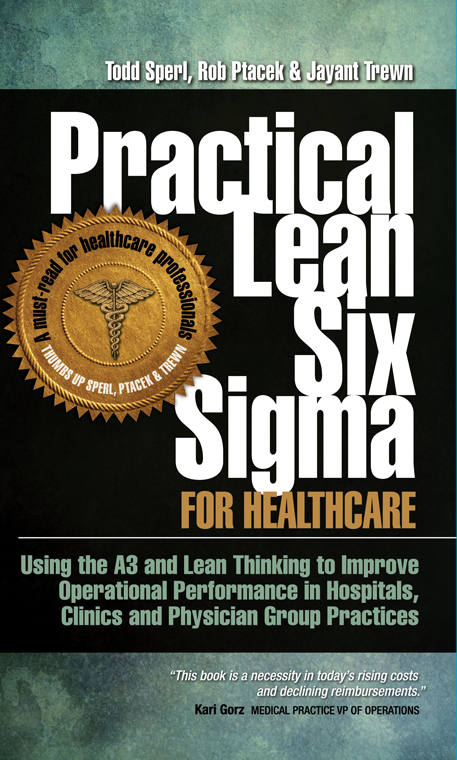
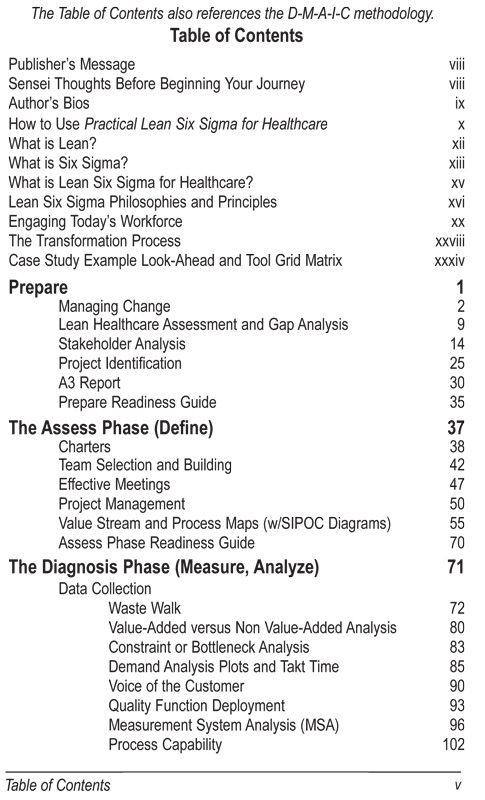

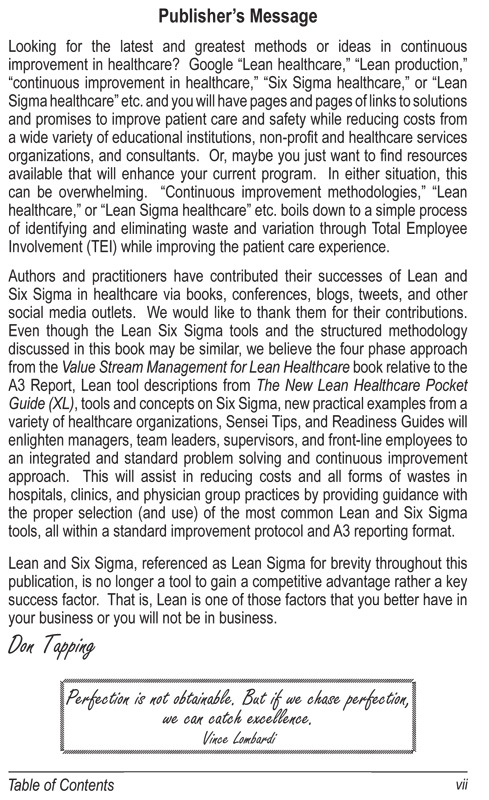
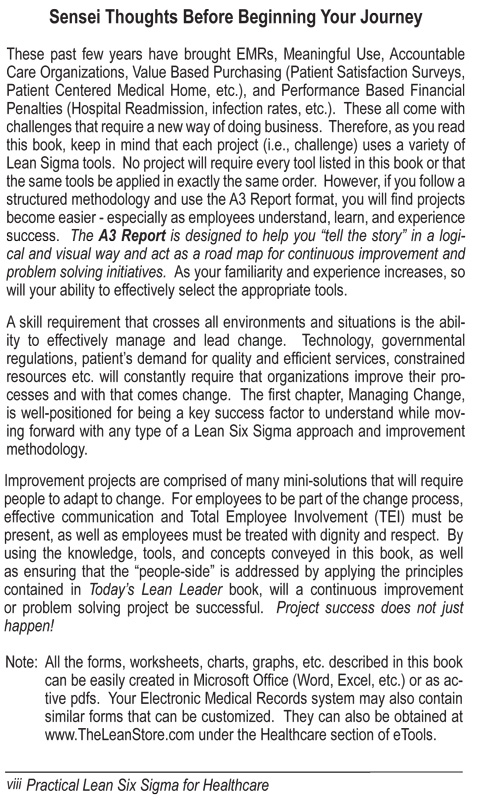
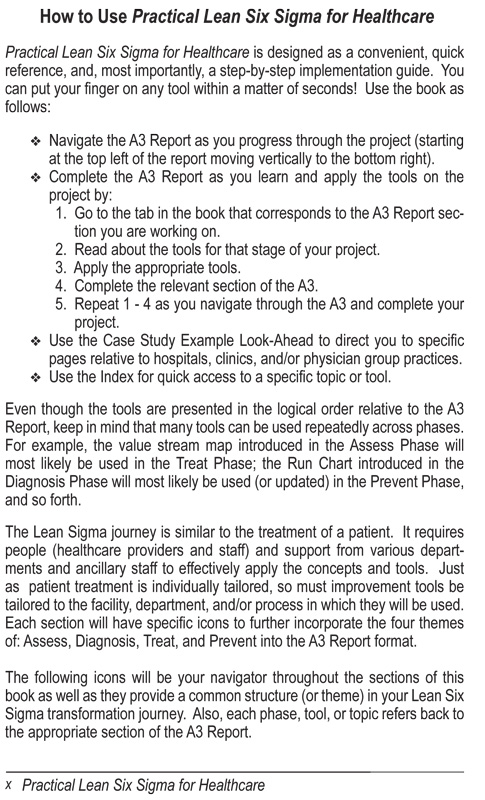
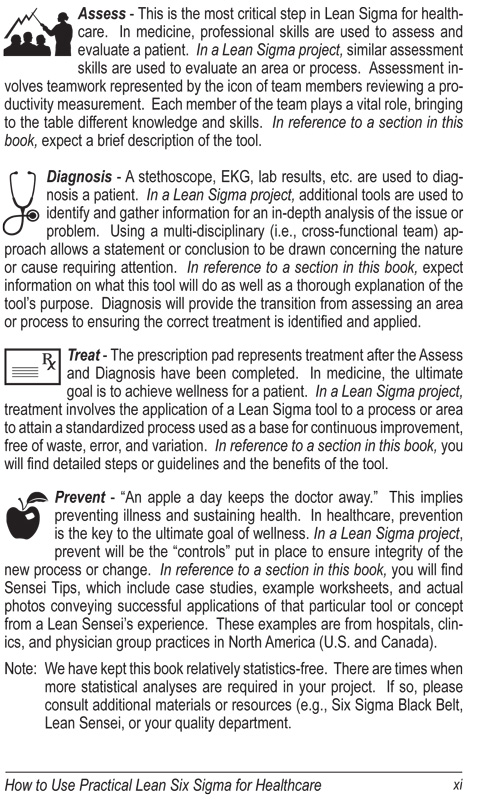
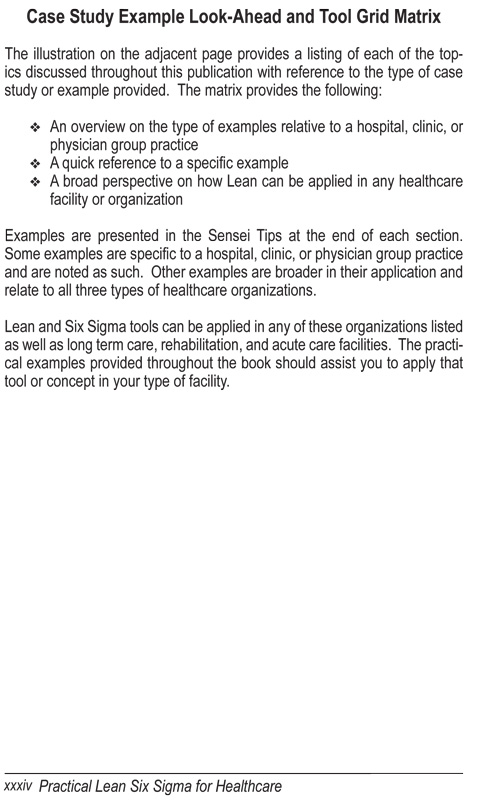

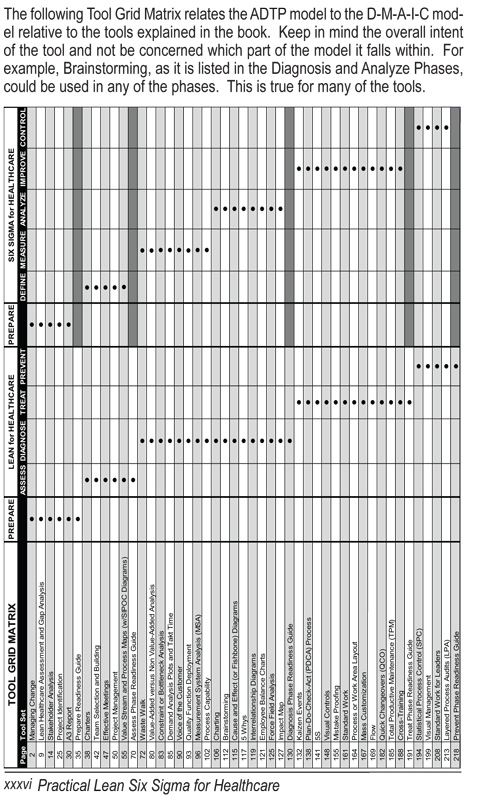
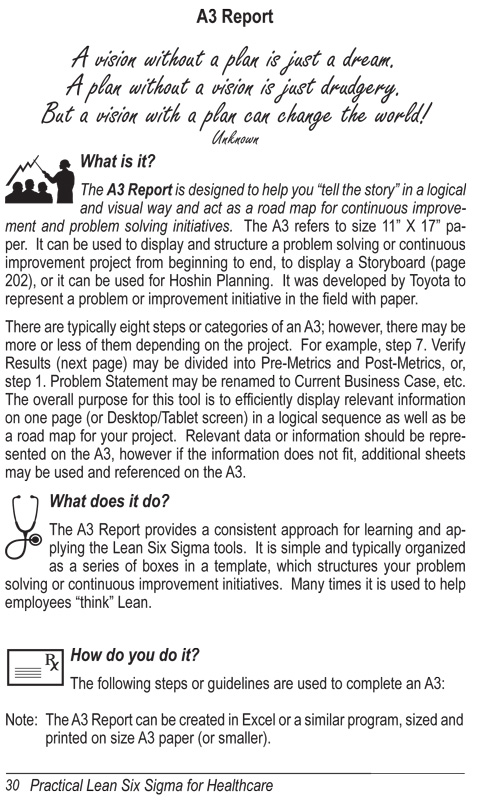
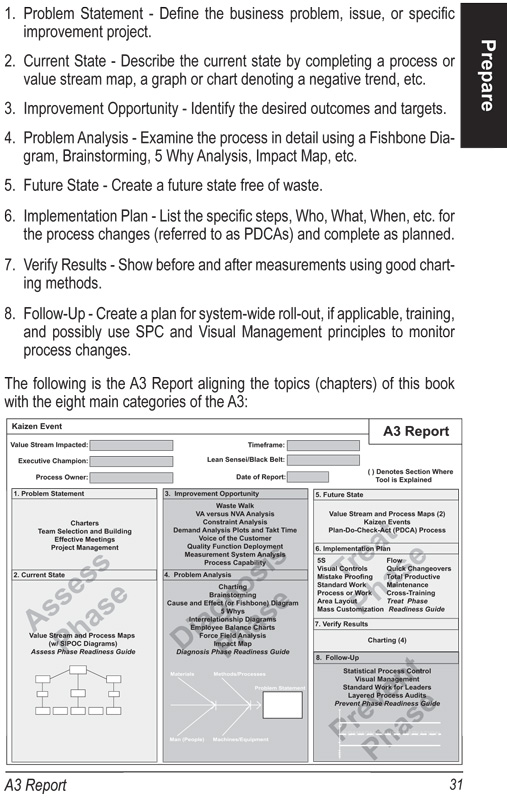
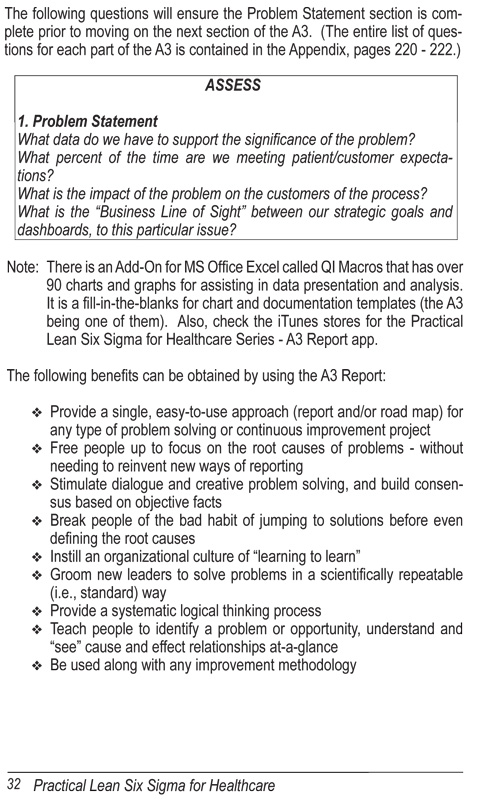
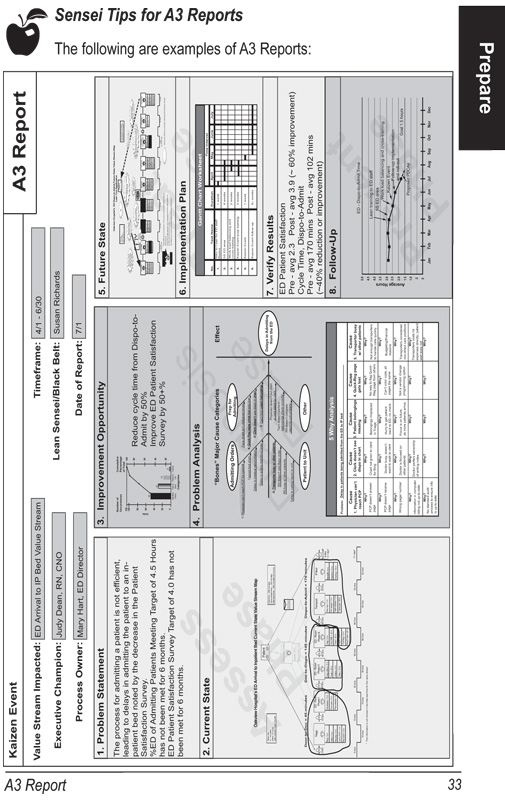
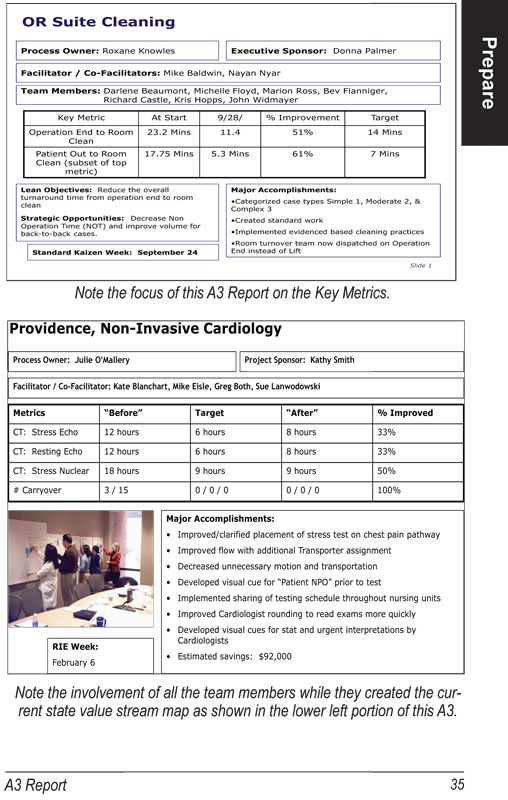

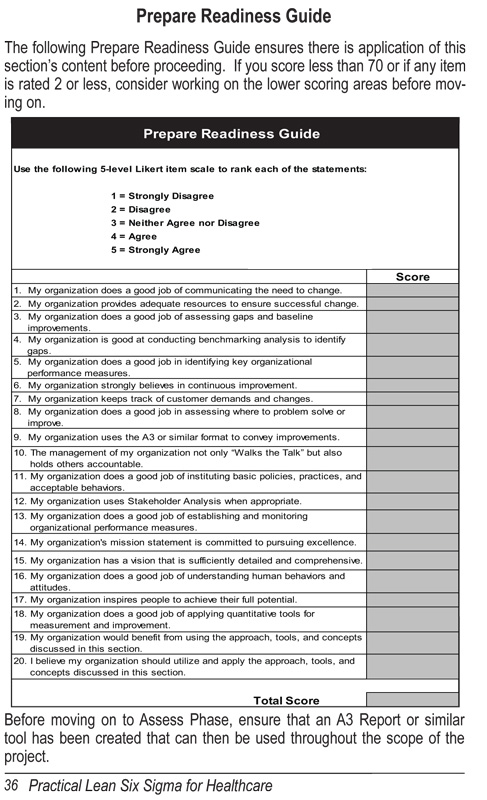
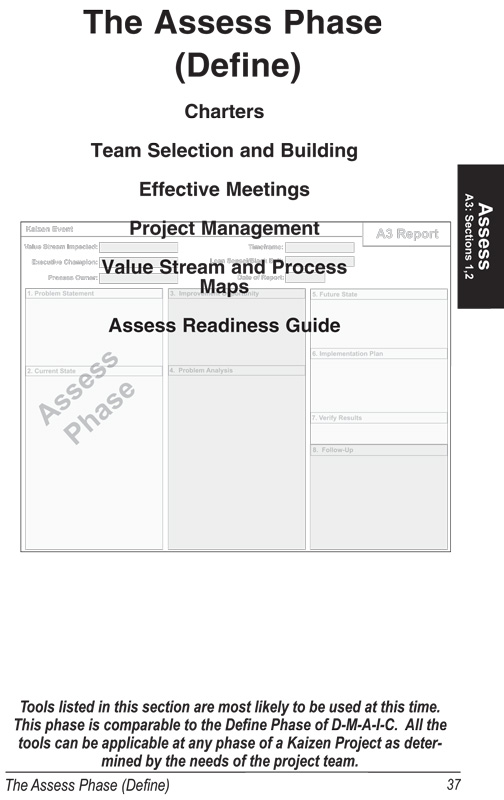
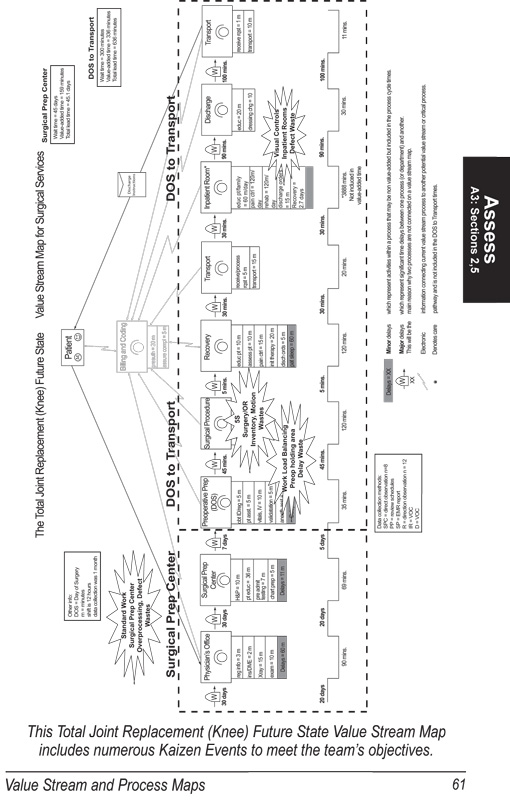
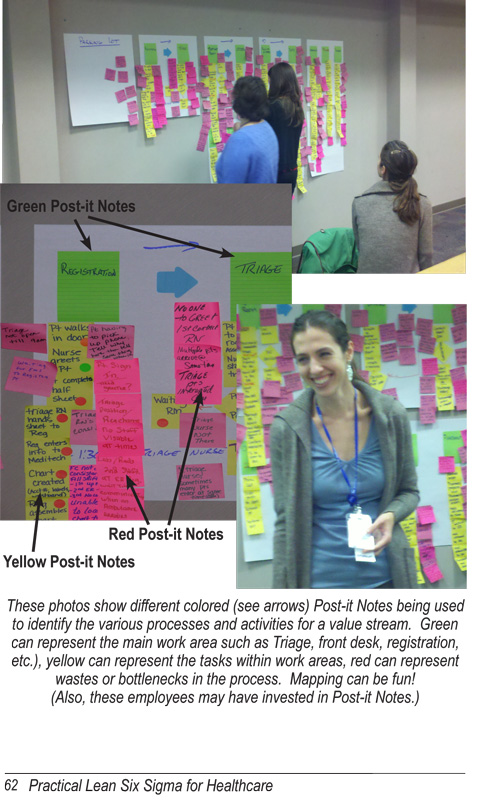
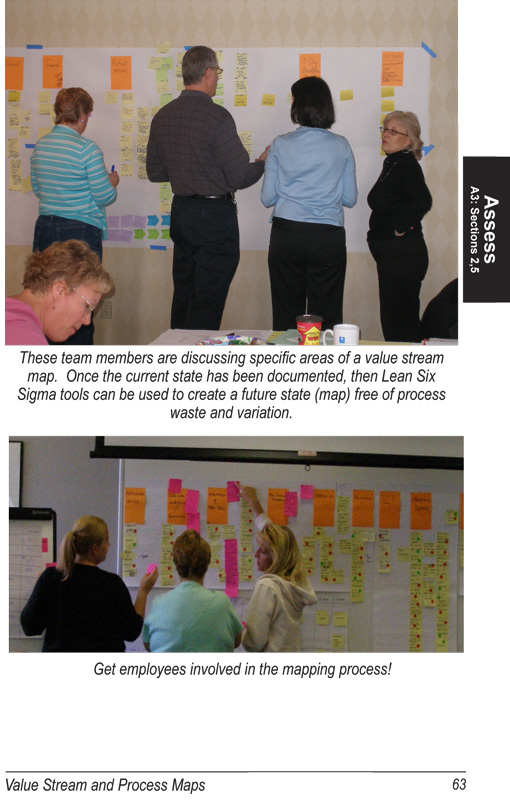
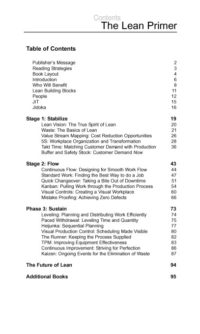

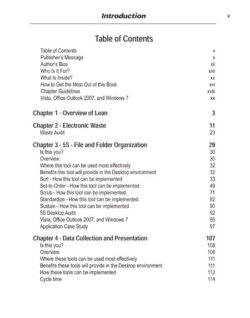
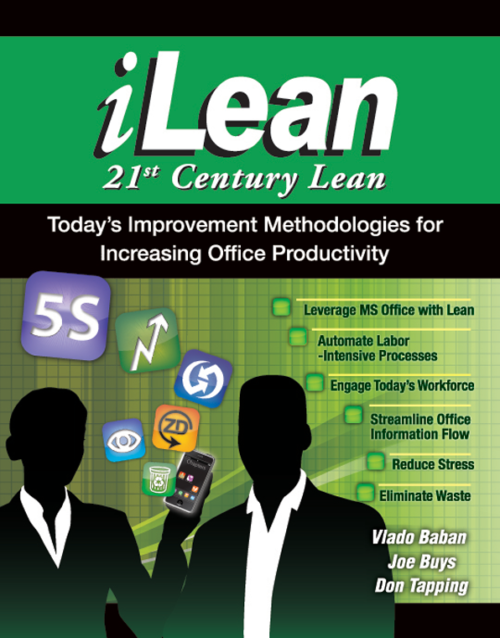
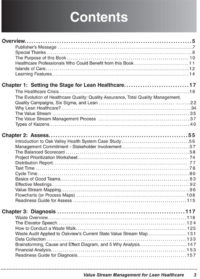
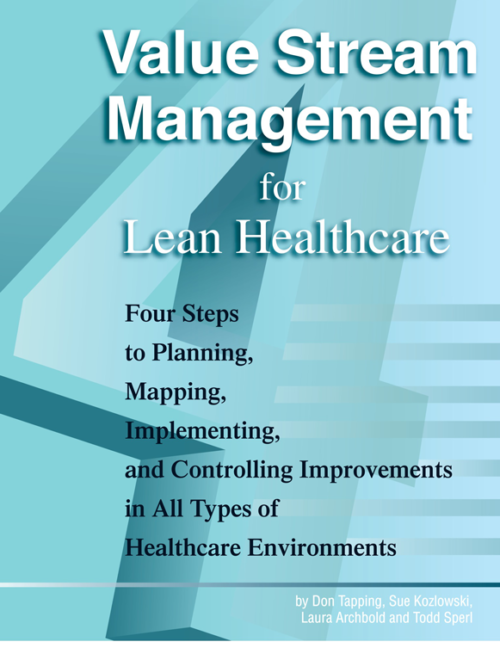
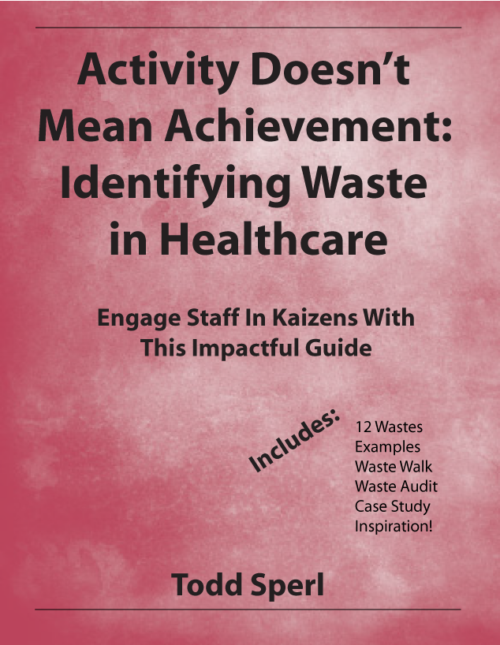
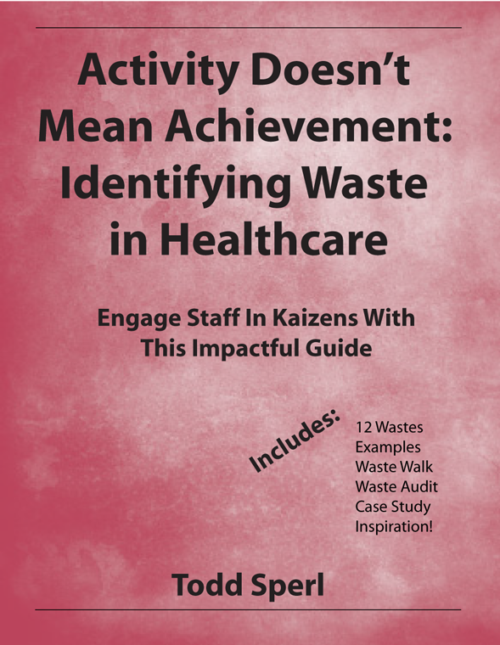
Reviews
There are no reviews yet.